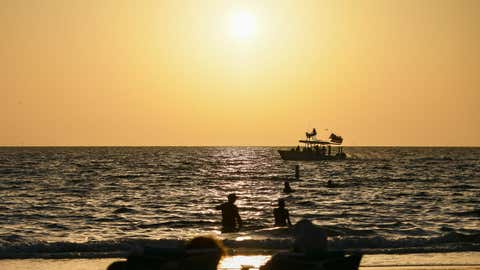

Visitors and beachgoers watch the late-afternoon sunset at Clearwater Beach, Florida.
(Photo by Ronaldo Silva/NurPhoto via Getty Images)
As water temperatures along the Gulf Coast continue to warm to their seasonal highs and more people are trying to squeeze in one more beach vacation before the start of a new school year, doctors are warning that cases of a potentially deadly flesh-eating bacteria are above average in 2025.
(MORE: Here’s What We’re Watching In The Tropics)
It’s known as Vibrio vulnificus and although it’s rare, several Gulf Coast states have seen more cases than usual this year. For example, Louisiana has confirmed at least 17 cases, four of which have turned deadly. The state typically sees seven cases in an average year and one death.
In Florida, another 13 cases and four deaths have been confirmed.
So here’s what you need to know to stay safe:
– “This bacteria normally exists in warm water, salty water, sometimes brackish water, especially during summer months,” Dr. Alok Patel, a pediatrician at Stanford Children’s Health, told ABC News.
– The best thing you can do to avoid contracting the bacteria is to stay out of the water if you have fresh wounds or cuts. That’s how Vibrio vulnificus enters the body.
– If you’re immunocompromised, the risk is even higher. However, anyone can get an infection, and a high percentage of those infected need to be hospitalized.
– Eating raw or undercooked seafood — oysters especially — also puts you at risk.
These are the symptoms to watch out for:
– Stomach cramps, nausea, vomiting, fever, chills and diarrhea
– Wound infections: Fever, redness, pain and swelling, warmth, discoloration or discharge
– Bloodstream infections: Fever, chills, very low blood pressure or blistering skin lesions
Source link


